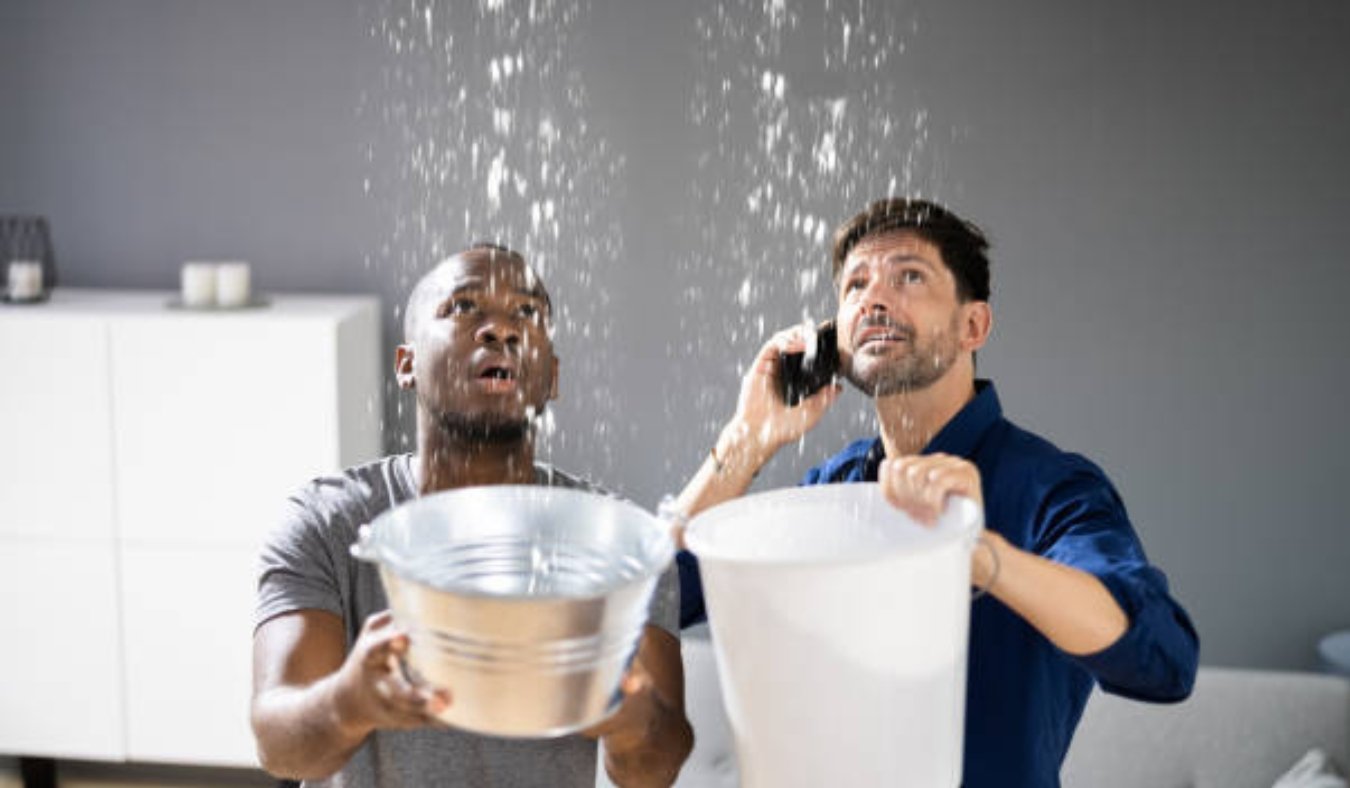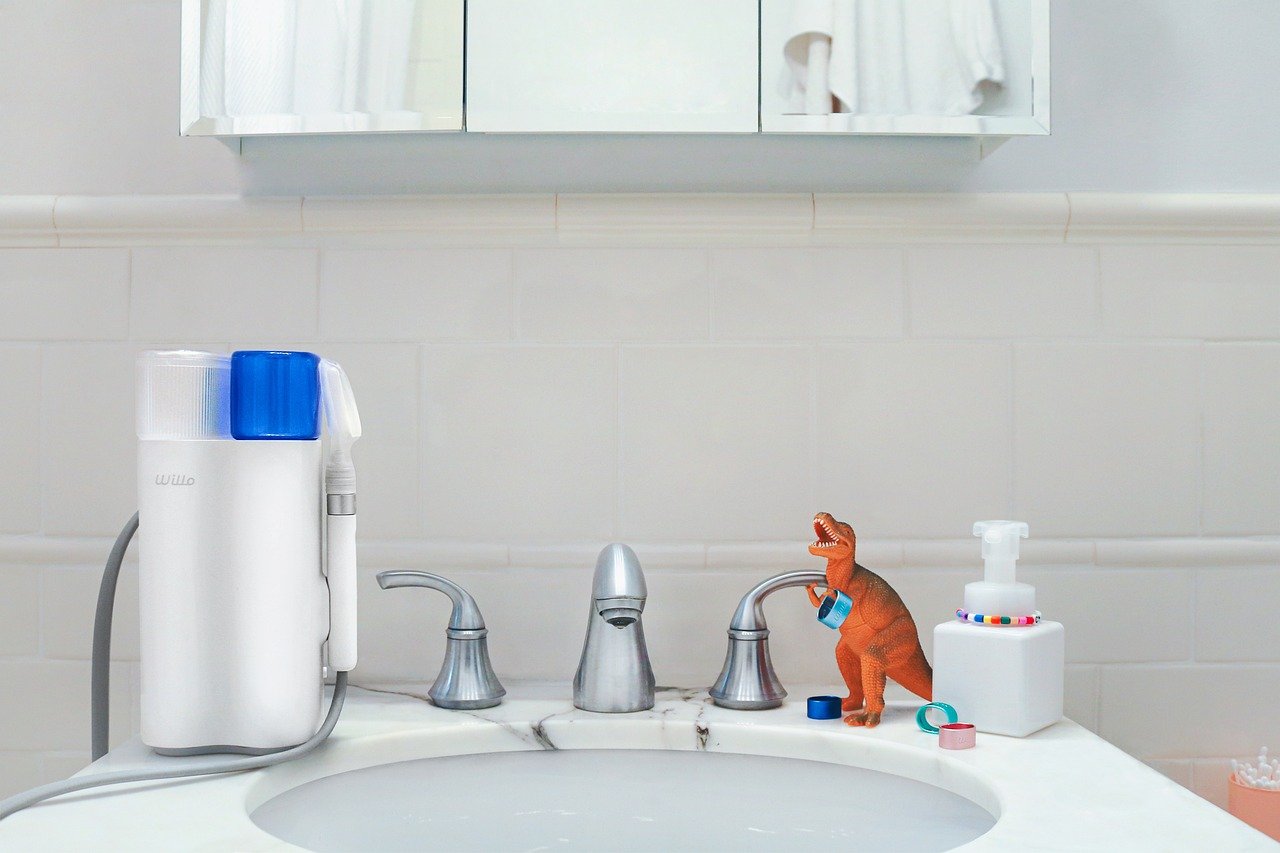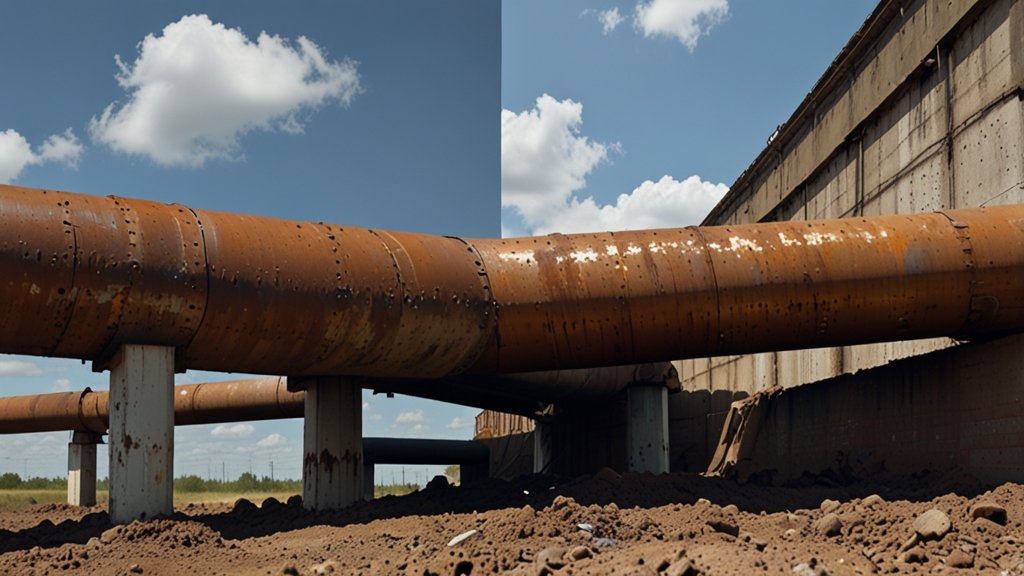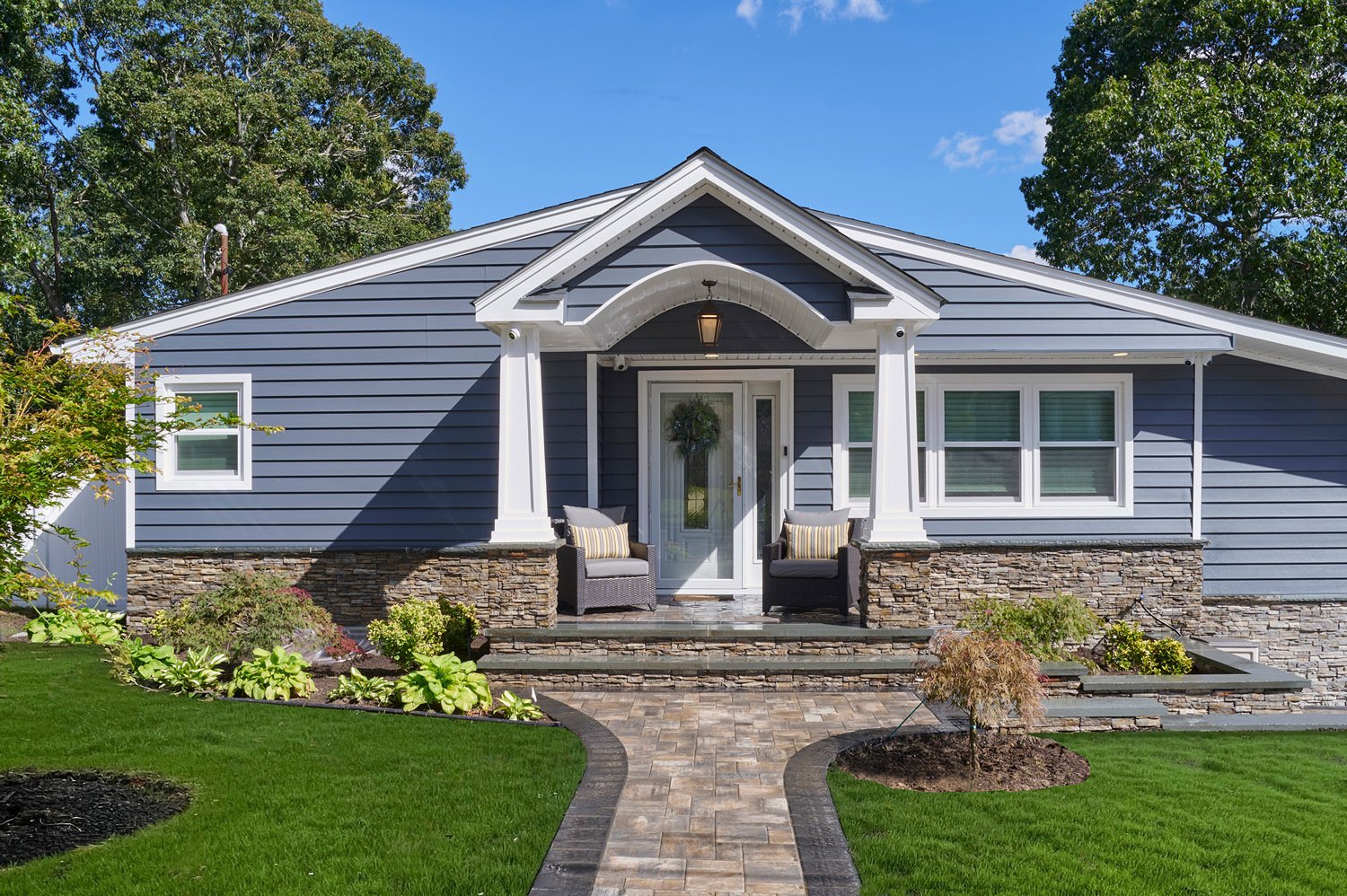In Vancouver, WA, water damage poses a persistent threat to homeowners, necessitating a deeper understanding of its root causes. The region’s damp climate, characterized by heavy rainfall and occasional flooding, exacerbates the risk of water-related issues. From leaky roofs to burst pipes, a myriad of factors contribute to water damage within homes. Understanding these causes is paramount for homeowners to implement effective preventive measures and protect their properties from the potentially devastating consequences of water intrusion.
Causes of Water Damage in Vancouver
Soil Saturation
In Vancouver, where rainfall is frequent, the soil surrounding homes can become saturated, exerting increased hydrostatic pressure against foundation walls. This persistent pressure can gradually weaken the foundation, leading to the formation of cracks through which water can infiltrate.
Over time, these cracks may widen, exacerbating the risk of water seepage into basements or crawl spaces. Proper grading of the yard away from the foundation and regular inspection and maintenance of the foundation can help mitigate this risk of water damage.
Landscape Irrigation
Improperly directed landscape irrigation systems or excessive watering of lawns and gardens can result in the accumulation of excess water near the foundation of homes in Vancouver. This pooling water can lead to soil erosion, compromising the stability of the foundation and creating pathways for water to infiltrate the home.
With time, the continuous presence of water near the foundation can exacerbate the risk of water damage, potentially causing structural issues and moisture intrusion into basements or crawl spaces. To mitigate this risk, homeowners should ensure that their irrigation systems are properly calibrated to avoid overwatering and that landscaping features facilitate proper drainage away from the home’s foundation.
Poor Ventilation
Inadequate ventilation in areas such as bathrooms, kitchens, and attics can create a conducive environment for moisture buildup. Without proper airflow to remove excess moisture, condensation forms on surfaces, providing a breeding ground for mold and mildew. Over time, this accumulated moisture can penetrate ceilings, walls, and insulation, leading to structural damage and compromising indoor air quality.
To prevent such issues, homeowners should ensure adequate ventilation in these areas by installing exhaust fans, opening windows when possible, and addressing any ventilation deficiencies promptly. Regular maintenance and inspection of ventilation systems can help mitigate the risk of moisture-related damage and maintain a healthy living environment.
Appliance Malfunctions
Malfunctioning appliances pose a significant risk of water damage in homes, particularly those like dishwashers, washing machines, and water heaters that involve water usage. Leaks from these appliances can lead to damage to floors, cabinets, and nearby areas, potentially causing structural issues and mold growth if left unaddressed. Regular maintenance and inspection of appliances are crucial preventive measures to identify and address any potential issues before they escalate.
Homeowners should regularly check for signs of leaks, such as water pooling around appliances or unusual sounds during operation, and promptly repair or replace faulty components to prevent water damage. Additionally, replacing hoses and connectors on appliances periodically can help minimize the risk of leaks and prolong the lifespan of the appliances.
Tree Root Intrusion
Tree roots are naturally drawn to sources of moisture, including underground plumbing lines, which they can infiltrate over time. As roots grow and expand, they can exert pressure on pipes, leading to blockages, leaks, or even pipe bursts. Homeowners should be vigilant about the location of trees and shrubs in proximity to their plumbing lines and take preventive measures such as regular root pruning or installing root barriers to mitigate the risk of root intrusion.
Additionally, scheduling periodic inspections of plumbing lines by professional plumbers can help detect and address root intrusion before it causes significant damage to the plumbing system.
Natural Disasters
In addition to heavy rainfall, Vancouver is prone to other natural disasters such as earthquakes or landslides, which can pose significant risks to homes. These events have the potential to disrupt drainage systems, leading to water pooling around properties and increasing the risk of water infiltration into homes. Earthquakes, in particular, can cause ground shifting and damage to underground pipes, exacerbating the likelihood of leaks or ruptures.
Homeowners should be prepared for these potential disasters by reinforcing their homes, securing outdoor fixtures, and having emergency plans in place to mitigate the risk of water damage and ensure their safety during such events.
Faulty Building Materials
Inferior building materials or construction practices can create vulnerabilities in homes, allowing water infiltration through various entry points. Poorly sealed windows or doors can permit water to seep into the home during rainfall or storms, leading to water damage to interior surfaces and structures. Similarly, improperly installed siding or gaps in exterior walls can compromise the home’s waterproofing, allowing moisture to penetrate and accumulate within the walls.
These vulnerabilities can escalate over time, causing structural issues and promoting mold growth if not addressed promptly. Homeowners should prioritize proper construction techniques and regular maintenance to prevent water intrusion and maintain the integrity of their homes.
HVAC System Issues
Improperly installed or maintained air conditioning units, ductwork, or condensate lines can create conditions conducive to moisture buildup and water damage within the home. If these systems are not adequately sealed or insulated, condensation can form, leading to excess moisture accumulation in various areas.
Over time, this moisture can promote mold growth, compromise indoor air quality, and cause structural damage to ceilings, walls, and floors. Regular inspection and maintenance of HVAC systems are essential to identify and address any issues promptly, such as leaks or blocked condensate lines, to prevent water damage and maintain a healthy living environment. Additionally, ensuring proper installation by qualified professionals can help minimize the risk of moisture-related issues in the long term.
How to Prevent Water Damage to Home?
Preventing water damage to your home involves a combination of proactive maintenance and precautionary measures. Here’s a comprehensive guide on how to prevent water damage:
Regular Maintenance
Routine inspections of your roof, gutters, and downspouts are crucial for identifying and addressing any damage or clogs promptly. Clearing debris and ensuring proper drainage can help prevent water buildup and potential leaks.
Moreover, trimming trees and bushes near your home reduces the risk of branches falling and causing damage during storms, safeguarding your property against water damage and structural issues. Proper maintenance and proactive measures play a vital role in protecting your home from the effects of water infiltration and preserving its integrity over time.
Proper Drainage
Ensuring proper grading of your yard away from your home’s foundation is essential to prevent water from pooling around it. This helps divert water away from the foundation, reducing the risk of water infiltration into basements or crawl spaces. Installing downspout extensions further facilitates proper drainage by directing water away from the foundation walls.
In cases where additional drainage is needed, French drains or other drainage solutions can be installed to effectively manage excess water and prevent potential water damage to your home. Consistent maintenance of these drainage systems is key to ensuring their effectiveness in protecting your home against water infiltration.
Plumbing Maintenance
Regular inspection of plumbing fixtures is vital to detect and address leaks promptly, minimizing the risk of water damage in your home. Installing leak detection devices or smart water shut-off valves adds an extra layer of protection by providing early warnings of leaks and automatically shutting off the water supply to prevent further damage.
These proactive measures not only help prevent costly water damage repairs but also preserve the integrity of your home’s infrastructure and ensure peace of mind for homeowners. Additionally, periodic maintenance and professional plumbing inspections can help identify and address potential issues before they escalate into larger problems.
Appliance Care
Maintenance of appliances like washing machines, dishwashers, and water heaters is essential to prevent leaks and water damage. This includes replacing old or worn hoses and connectors, which can weaken over time and lead to leaks. Installing water leak detection devices near appliances provides an additional layer of protection by alerting homeowners to potential leaks early on, allowing for prompt action to prevent water damage and costly repairs.
Foundation Protection
Monitoring your home’s foundation for cracks and promptly sealing them is crucial to prevent water seepage into basements or crawl spaces. Furthermore, installing a sump pump in these areas helps remove excess water and mitigate the risk of flooding during heavy rainfall or plumbing emergencies. These preventive measures safeguard your home against water damage and maintain a dry and secure environment in your basement or crawl space.
Weatherproofing
Sealing windows, doors, and other openings effectively prevents water intrusion during heavy rain or storms, safeguarding your home against water damage. Additionally, installing storm shutters or flood barriers provides an extra layer of protection during severe weather events, further minimizing the risk of water infiltration. These measures help maintain the integrity of your home’s exterior and protect its interior from the damaging effects of water intrusion, ensuring a safe and dry living environment.
Monitor Indoor Humidity
Maintaining low indoor humidity levels is essential to prevent moisture buildup and inhibit mold growth within your home. Utilizing dehumidifiers in areas prone to dampness, such as basements and bathrooms, helps regulate humidity levels and reduce the risk of mold proliferation. Additionally, ensuring proper ventilation throughout your home, especially in high-moisture areas, promotes air circulation and helps expel excess humidity, further preventing mold growth and preserving indoor air quality.
Insurance Coverage
Reviewing your homeowner’s insurance policy is crucial to understand the extent of coverage for water damage incidents. It’s essential to know what types of water damage are included and excluded from your policy to ensure adequate protection. Consider adding additional coverage, such as flood insurance or sewer backup coverage, if your policy does not provide sufficient protection against specific water-related risks. This step can help mitigate financial losses and ensure comprehensive coverage in the event of water damage to your home.
How to Restore Your Home from Water Damage?
Restoring a home from water damage requires a systematic approach to address both the visible damage and potential hidden issues. Here’s how homeowners can restore their homes from water damage, with a focus on utilizing professional Water Restoration Vancouver services:
Assessment and Inspection
Begin by assessing the extent of the water damage. Professional water restoration services, such as Water Restoration Vancouver, can conduct a thorough inspection to identify all affected areas and assess the severity of the damage.
Water Extraction
The next step is to remove standing water from the affected areas. Industrial-grade pumps and vacuums are used to extract water efficiently, minimizing further damage to the property.
Drying and Dehumidification
Once the excess water is removed, the drying process begins. High-powered fans, dehumidifiers, and specialized drying equipment are employed to dry out the affected areas thoroughly.
Cleanup and Sanitization
Water damage can lead to mold growth and bacterial contamination, so thorough cleaning and sanitization are essential. Professional restoration services like Water Restoration Vancouver use antimicrobial treatments to disinfect and prevent mold growth.
Repairs and Restoration
Finally, repairs and restoration work can commence once the affected areas are thoroughly dried and sanitized. This may involve repairing structural damage, replacing damaged materials, and restoring the home to its pre-damage condition.
Conclusion
Understanding the causes of water damage in Vancouver homes is crucial for homeowners to effectively protect their properties. By recognizing common culprits such as heavy rainfall, sewer backups, and landscape irrigation issues, homeowners can implement preventive measures to mitigate risks. Additionally, addressing less obvious factors like soil saturation, faulty building materials, and appliance malfunctions can further safeguard homes against water damage. With proactive measures in place and a comprehensive understanding of potential threats, homeowners in Vancouver can minimize the risk of water damage and ensure the long-term integrity of their homes.










